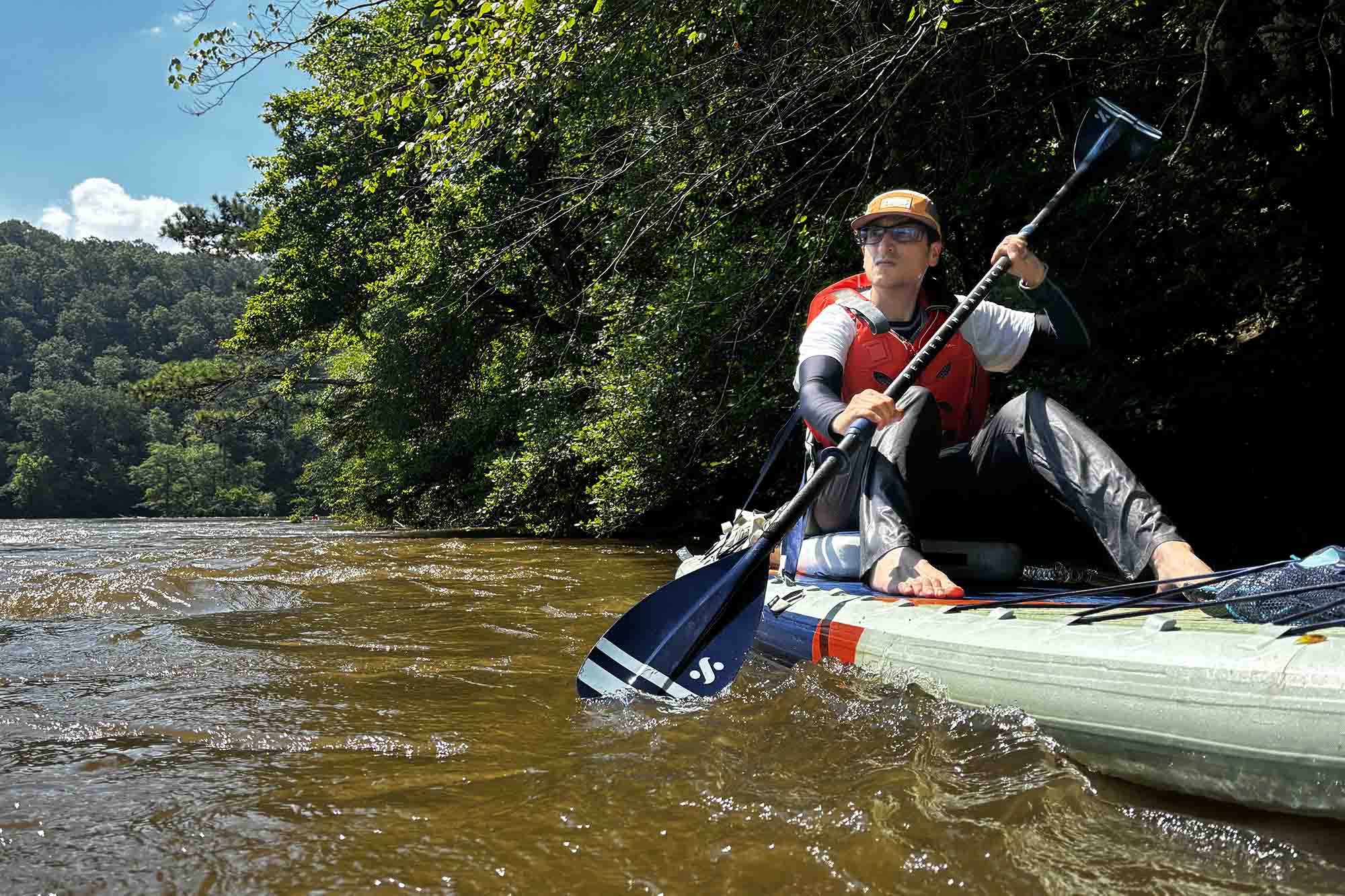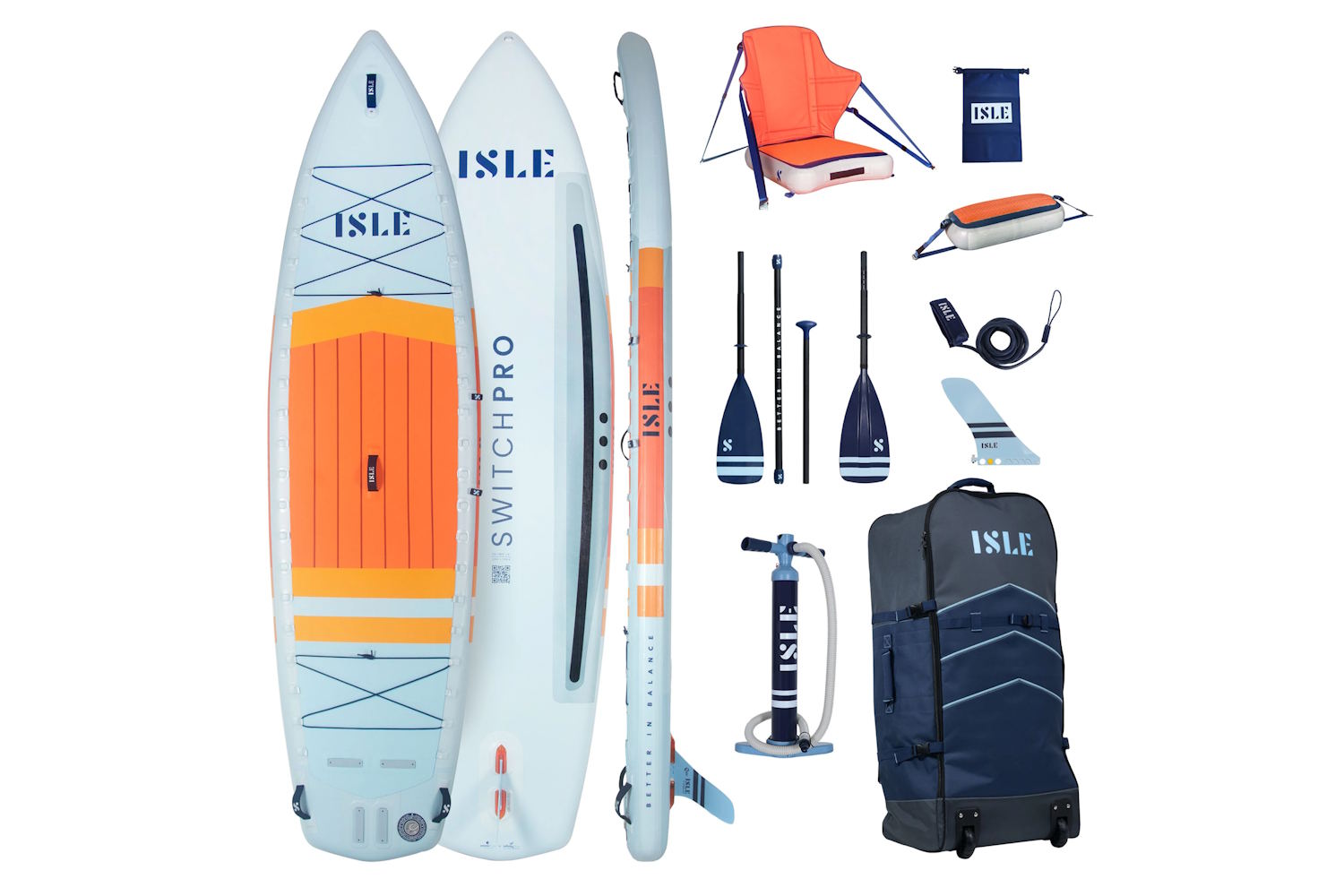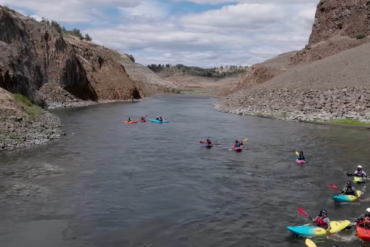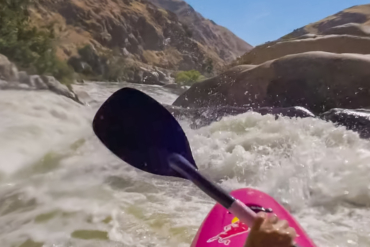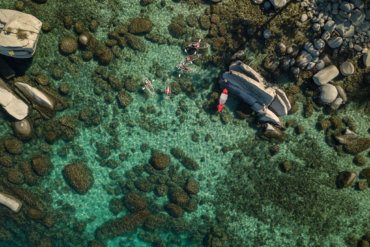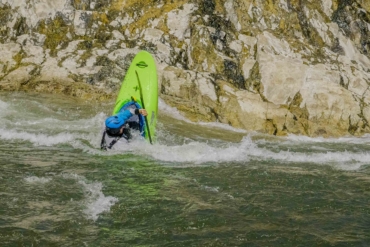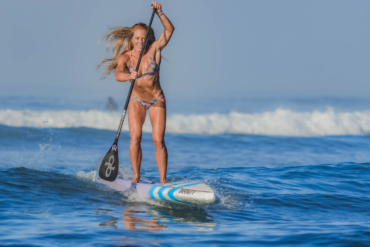I’ll always be grateful to ISLE paddleboards for showing me a simple truth. Atlanta might be the most underrated city in the country.
Over the last 2 months, the brand’s inflatable standup paddleboard (SUP)/kayak hybrid has carried me down a hundred miles of Georgia rivers. Along the way, I’ve become enamored of this part of the country.
Just a half hour of driving from my apartment in east Atlanta, I can hop on the river and find myself immediately surrounded by nature’s abundance. Singing birds, bubbling rapids, and the frequent absence of other humans — I’ve had some of the best days of my life lately.
I tried out the ISLE Switch Pro specifically to see how far I could go. This burly board rounds out ISLE’s Pro Paddle Board Series with a high weight capacity and extra-rigid construction for longer adventures. And that’s exactly what I got during my river camping trip. It was a long day of exploring, capped off by campfire sausages in a place only reachable from the river.
ISLE’s powerful and portable board reminded me that the best gear allows us to inhabit outdoor spaces more deeply. It’s not just about the thing itself but where it takes us.
In short: The ISLE Switch Pro is the latest in the brand’s lineup of versatile SUP/kayak hybrids. Upgrades from the previous Switch model make this board even more stable and agile in the water, with an emphasis on durability and more weight capacity. From a river camping trip to whitewater rapids to ferrying my mom around a lake — this SUP could handle almost any situation I put it in.
If you’re in the market for a SUP, check out GearJunkie’s guide to the Best Standup Paddleboards to compare some options.
- Length: 11'6"
- Width: 35.5"
- Thickness: 6"
- Weight Capacity: 475 lbs.
- Weight: 23 lbs.
- Fin setup: Single, removable 9-inch touring-style flex fin
- Tie-down points: Two bungee-corded areas (six-point and four-point) on the bow and stern
- Features: Attachment points for a kayak seat and footrest
- Accessories: Hand pump, electric assist motor mount system, carbon paddle, extra blade, kayak seat, foot brace, wheelie backpack, ankle leash
Pros
- Super high weight capacity
- Rigid and durable
- Lightweight and easy to carry
- Maneuvers well seated or standing
Cons
- Not cheap
- Packing it up can be frustrating
- Wheeled backpack model not as versatile as other ISLE backpacks
ISLE Switch Pro Review
The allure of ISLE’s Switch Pro is simple: It’s got muscle.
This baby has an impressive 475-pound weight capacity — the highest of any one-person ISLE board. Even laden with 50 pounds of camping gear and my 145-pound body, the combined weight doesn’t reach even half of what the Switch Pro is capable of. It can accommodate both my parents, who joyously paddled on it together on nearby Lake Lanier.
Adding weight does affect the board’s maneuverability, but not as much as you’d think. Properly balancing weight on either end preserves much of the Switch Pro’s svelte handling. More importantly, the extra capacity doesn’t make the board itself heavier.
The Switch Pro weighs just 23 pounds. That means it’s 3 pounds lighter than the ISLE Pioneer Pro (plus or minus accessories) while still supporting more weight.
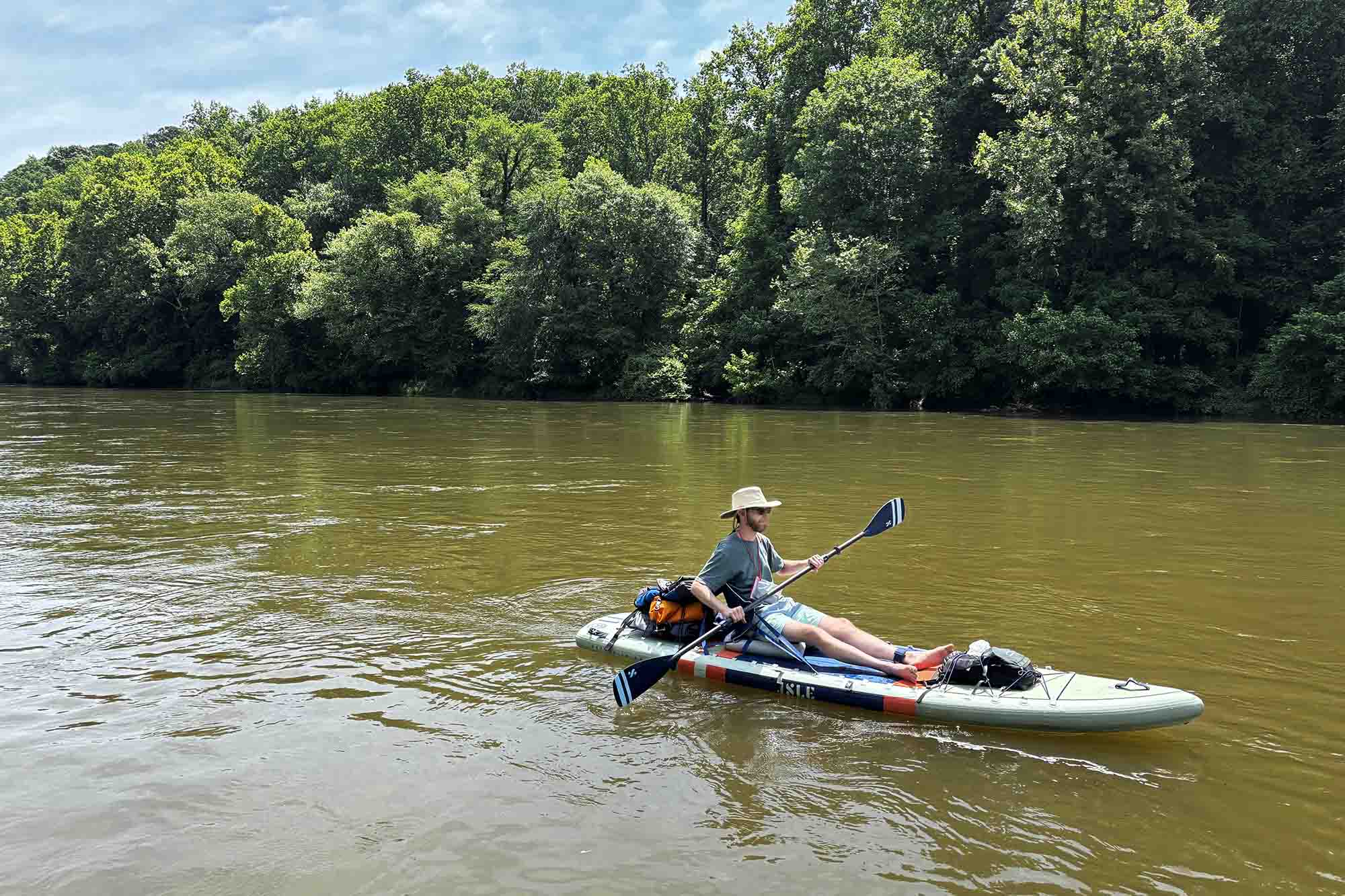
To Infinity (Fiber) and Beyond
Like other Pro Series boards, the ISLE Switch Pro is made with Airtech Pro Infinity Fiber. This material supposedly makes the boards three times more rigid than any other inflatable on the market.
ISLE has referred to its Pro series of boards as “inflatable hardboards.” GearJunkie tested the ISLE Switch before this tech was integrated. But when ISLE released the Switch Pro, we decided it was worth a revisit.
And Airtech Pro Infinity Fiber is the marriage of two patents: Airtech Pro, which comes from the U.S. Navy, and Infinity Fiber, which is exclusive to ISLE. According to ISLE product designer Jimmy Blakeney, both the U.S. Navy and NASA have begun experimenting with ISLE’s Infinity Fiber in their own designs.
On the ISLE Switch Pro, the material is woven into the board’s curved rail, deck, and hull. It’s visible on the bottom, as shown below.
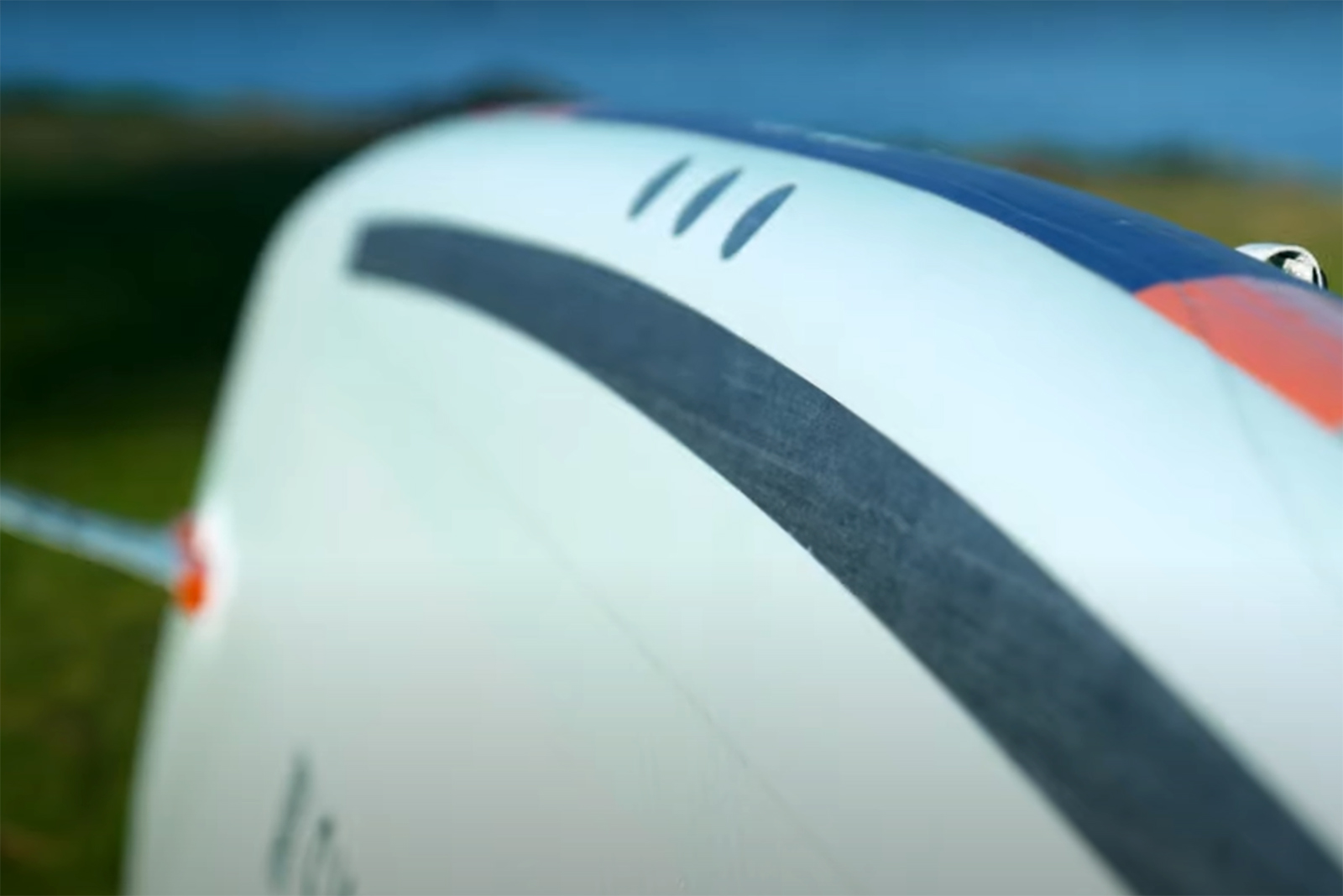
From my own experience, I can say that the Switch Pro certainly feels sturdier on the water than my ISLE Explorer 2. I’ve pummeled both SUPs against sharp river rocks, downed logs, and other debris to prove the point. After just a few weeks of use, the Explorer 2 has already suffered some visible damage. The Switch Pro, by comparison, still looks ready to rumble.
I’m not sure if that elevates ISLE’s Pro Series into a new class of “inflatable hardboards,” as Blakeney refers to them. But I can say with confidence that I never envied the hardboard kayakers during my testing. Many of them, however, slowed down to inquire with raised eyebrows about my Switch Pro tackling whitewater while laden with gear.
So, does this board have all the rigidity of a hardboard? Not quite — but it’s pretty darn close. And given that it rolls up into a backpack, I think many paddlers will accept the compromise without a second thought.
A Durable Navigator
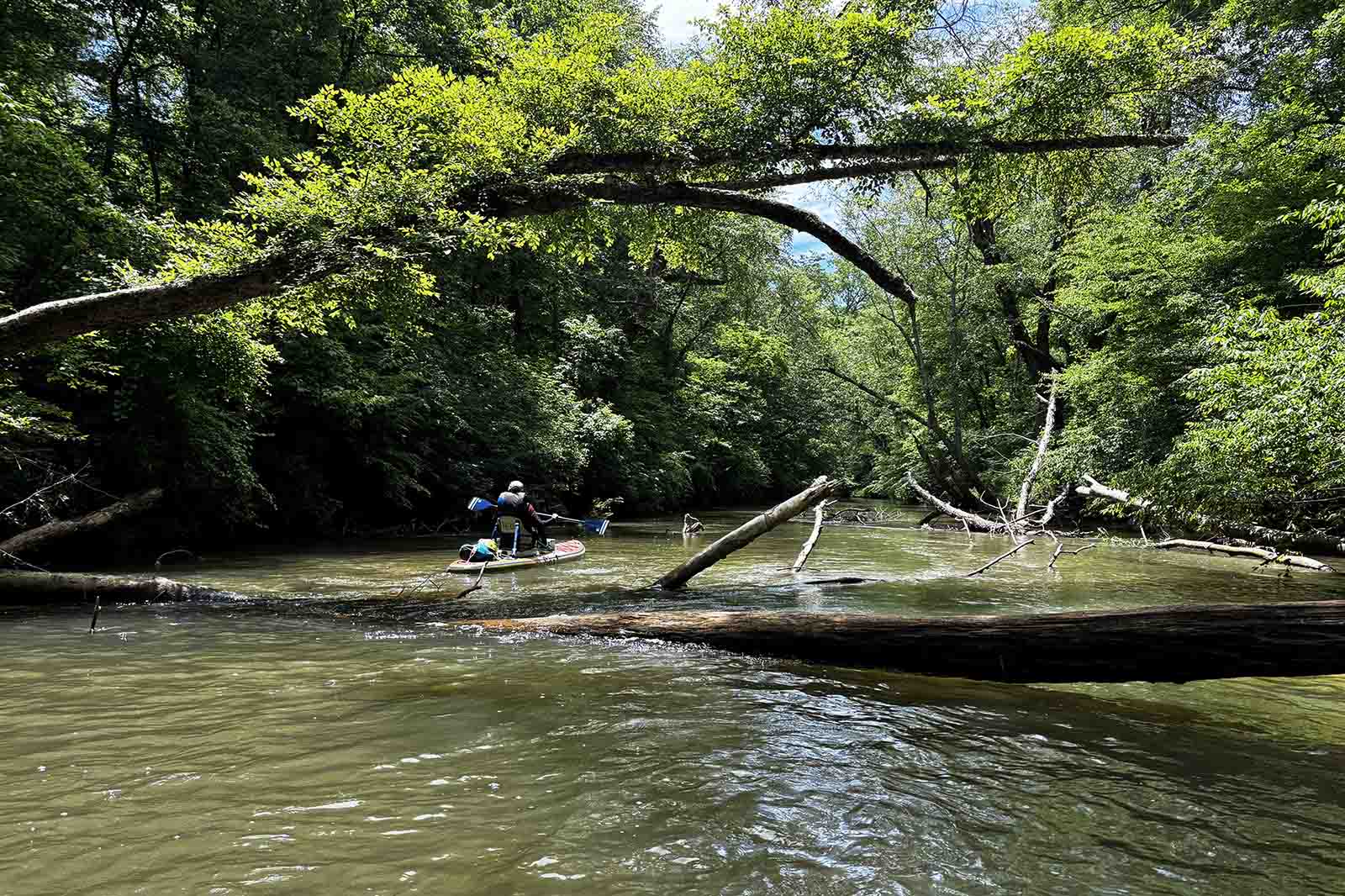
The Switch Pro’s advantages over comparable options quickly became clear when I capped off my testing with a camping trip down the Etowah River.
Compared to other ISLE models, a thicker, comfier foam pad covers the entire Switch Pro. A series of loops on either side make it easy to clip on more gear, tie on to other boards, and attach the kayak seat (same as the Switch).
For me, this thing offers the best of all worlds. It’s a SUP board for immersion in the environment. It has a kayak seat to make it more maneuverable. And its weight capacity rivals that of a canoe.
My buddy Diego used my Explorer 2 while I carried most of the gear on my Switch Pro. As we zipped past kayaks, canoes, inner tubes, and fishing boats, I never once wanted anyone else’s rig.
A group of four canoers literally brought a chainsaw to deal with the many fallen trees blocking the river. As we paddled by, they told us we wouldn’t be able to continue without them clearing the way for us. A dam of trees further downriver would cause problems.
They were only half right.

An hour later, we found ourselves facing a 6-foot-high dam of logs, which we crossed in about 3 minutes by hauling our boards (with gear still attached) over the blockage and continuing on our merry way.
The canoe group didn’t arrive at camp until late that night. We got to ours with a couple of hours of light to spare after traveling 20 miles — twice the distance of anyone else I asked. Traveling downriver by a lightweight, inflatable paddleboard is certainly an efficient means of transportation.
Gear Storage & Camping
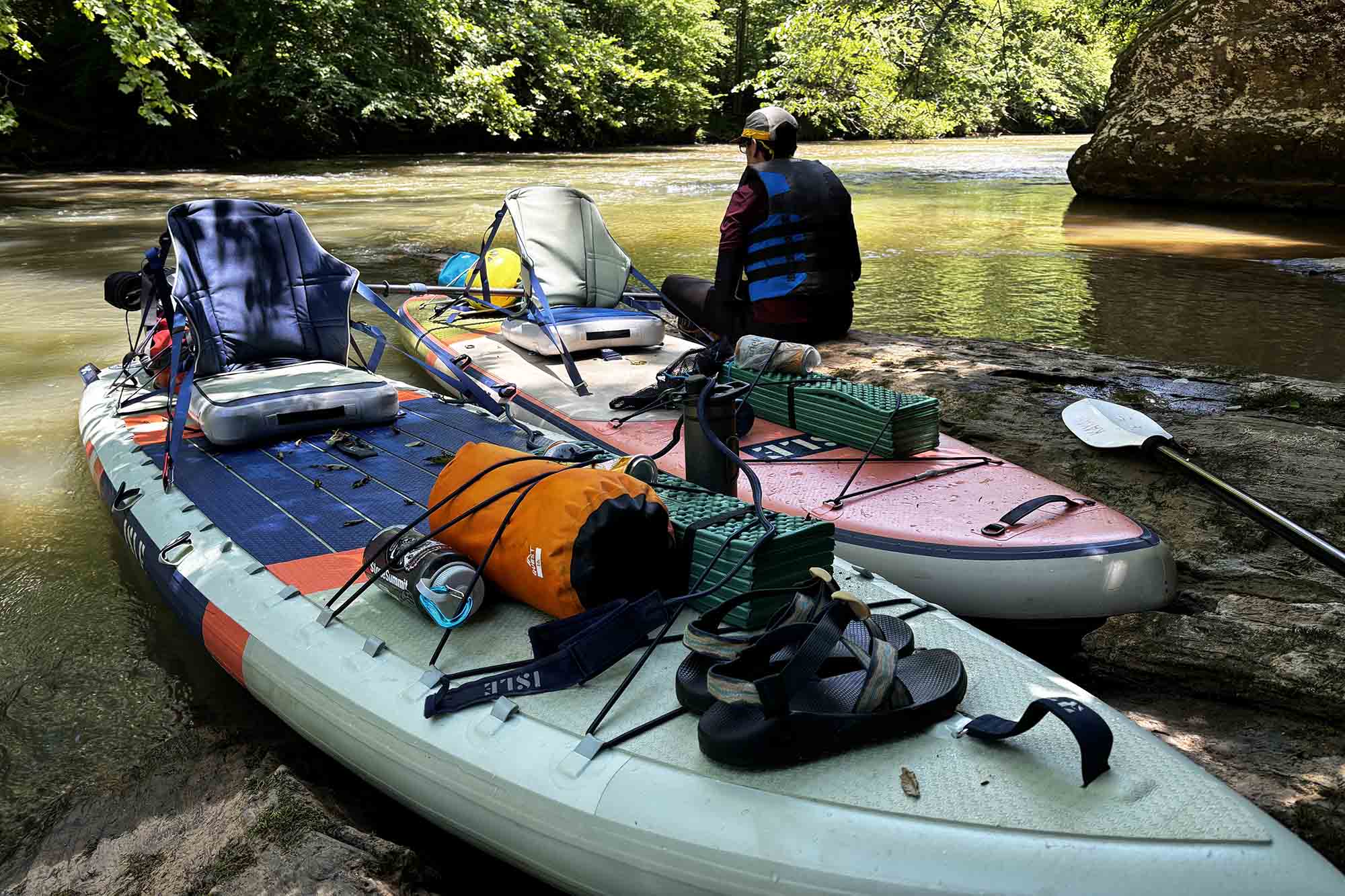
As a frequent backcountry hiker and camper, I have to admit it’s nice not to worry about weight. Gear feels much lighter when it’s not on your back.
But when I decided to go river camping with a friend, I didn’t have camping gear for two people (I do most things solo). So I bought a $90, 6-pound Kelty Tanglewood 2, an $18 Ozark Trail sleeping bag from Walmart, and some cheap sleeping pads.
I stashed the tent, sleeping bags, and extra clothes in roll-up dry bags. The bulk of our food, our camping stove, water purifier, and other gear went into an Ortlieb 45L Atrack. This waterproof backpack is one of the best I’ve ever used, with a tough rubber zipper that opens from the rear like a duffel bag.
All of our gear fits snugly under the Switch Pro’s stretchy webbing. Usually, I like sticking to the basics and keeping weight to a minimum. That’s what I did when planning our first night of camping. But this board is a sturdy freighter. Next time around, I plan to bring a camping chair, hammock, and (more) beer. With such a mighty river mule, why not?

There’s only one caveat to heavy gear storage: the increased risk of capsizing. Diego and I each experienced this once. It was usually when a fallen tree created extra suction in the current.
In my case, I got caught under my board, which was flipped beneath a log. Thanks to the relatively small amount of weight, I was able to disentangle the board and flip it back over — quickly resolving a risky situation. I also think my board was initially weighted too heavily in the rear, making it more difficult to maneuver.
Even in Georgia’s mostly shallow rivers, river camping involves a lot more risk than a night in the Appalachian forest. So, don’t forget your personal flotation devices (PFDs), and bring a helmet and throwbag if entering the whitewater.
Rescue Missions From a SUP
If there’s one piece of evidence to recommend this uber-rigid inflatable, it’s the number of times I’ve used it to help others.
I love exploring the Chattahoochee, which runs through Atlanta and offers endless fishing, swimming, and water sports opportunities. However, the current is often very strong, causing many recreational tubers to miss the desired river exit. That usually means a prolonged ordeal of waiting for river guides or police to come to rescue them. I’ve already helped these unlucky tubers half a dozen times.
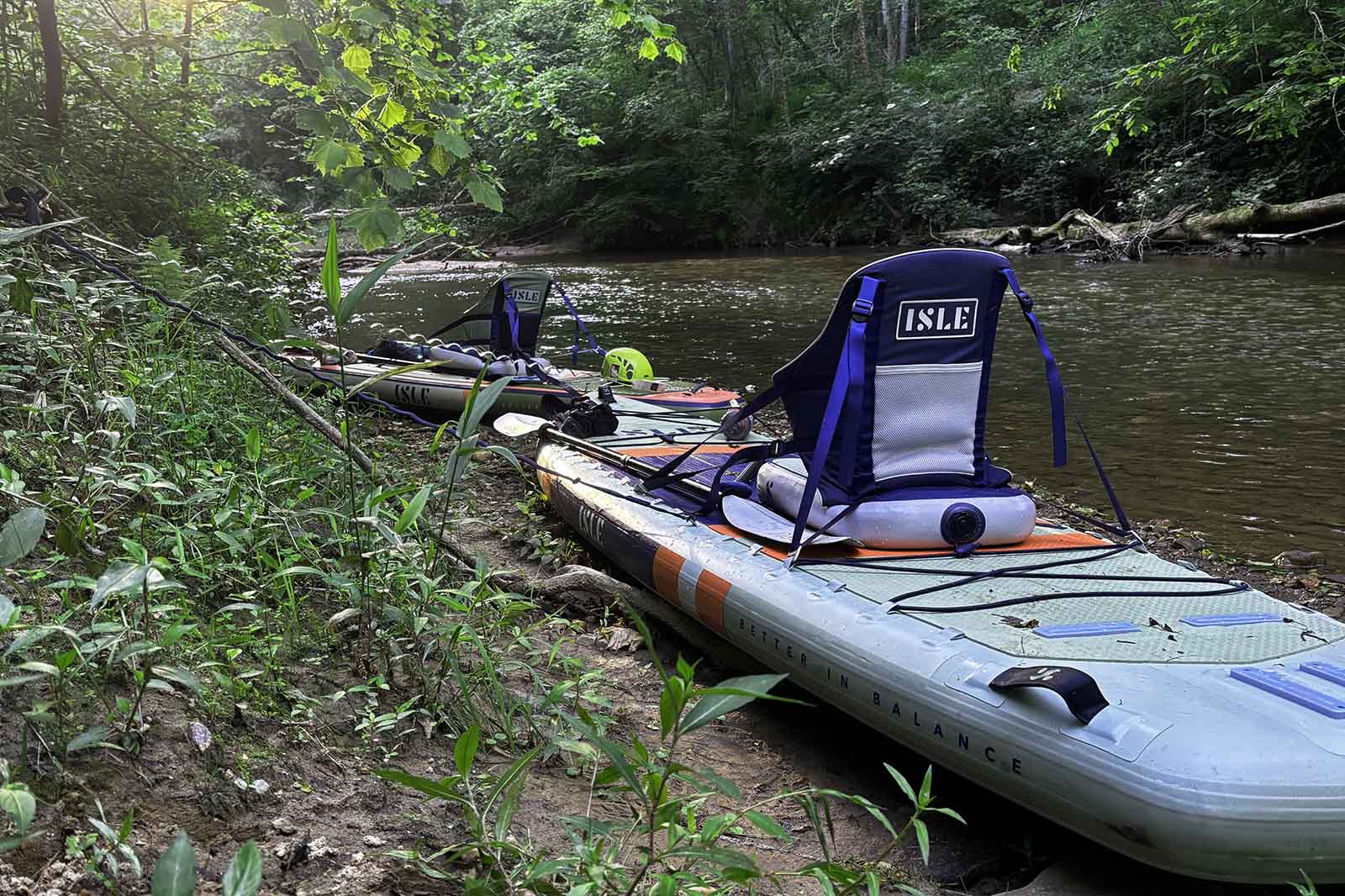
In one case, a group of five tubers were beached on a rock in the middle of a strong current and yelled for help. I tossed them a rope and hauled all five of them to the next access point a mile downriver. My board never complained.
About an hour later, I was just chilling in the river at the same exit when an elderly fisherman lost his footing and suddenly found himself swept away by the current. In the space of probably 10 seconds, I told him to throw me his rod, then I hopped off my 11-foot board and pushed it out to him, which he managed to grab just in time for me to pull him back to shore.
“This guy saved my life,” he (somewhat) jokingly told his wife afterward.
The Switch Pro even proved itself during the raddest test of all: paddling through the darkness. My camping trip with Diego hit an unexpected snag one night right before bedtime. As Diego and I settled into our comfy tent, he realized that his wife had texted him earlier in the day about an emergency. We didn’t have cell service, and it wasn’t clear if she still needed help.
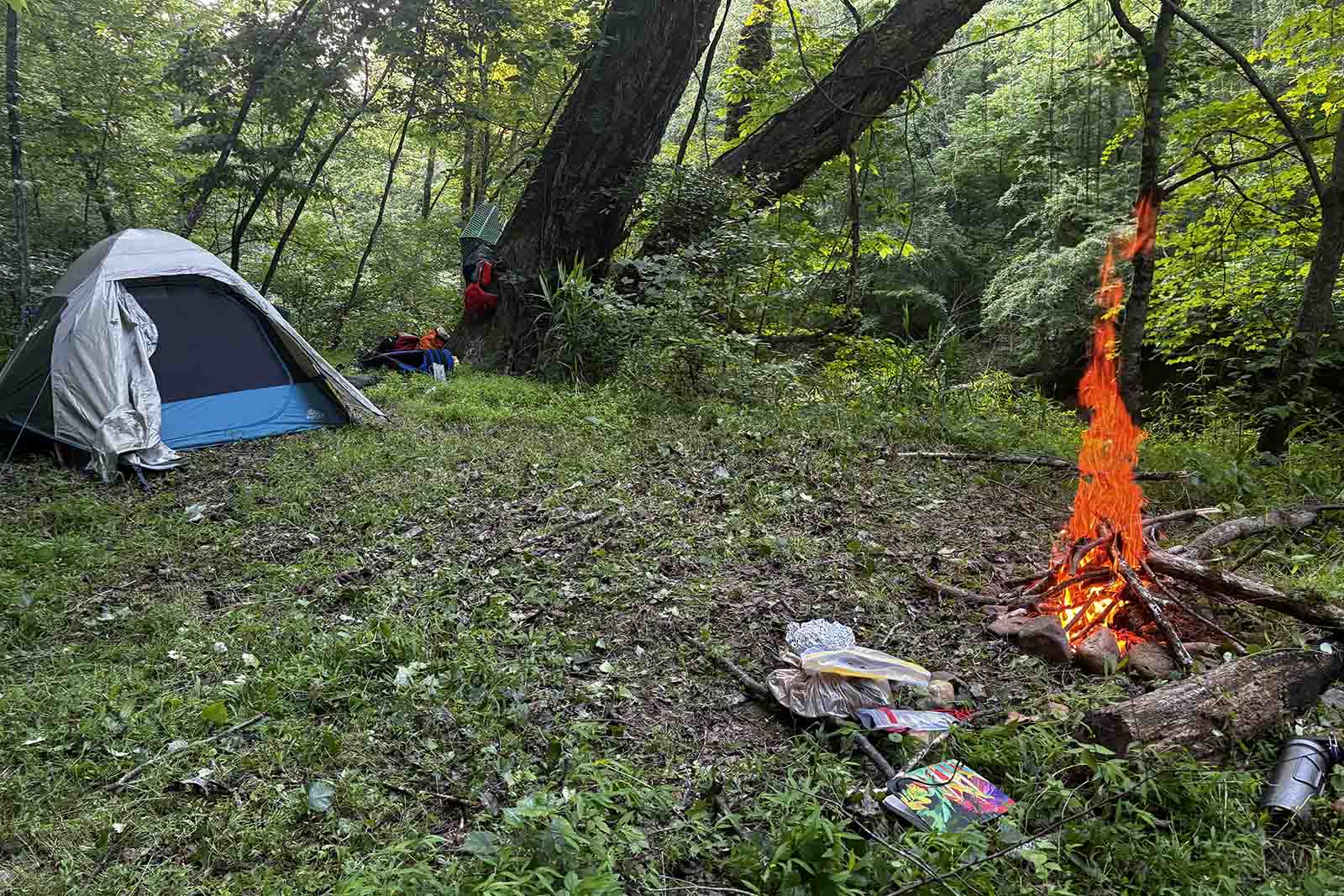
So, we did what any concerned husband and his trusty pal would do: We packed everything back onto our two boards, strapped on headlamps, and paddled 3 more miles of the river in the dark. The water below disappeared into the black, while hundreds of stars peeked through the strip of visible sky weaving among the canopy around us.
We reached the next exit point, where Diego could call his family (everything worked out fine). I reflected later that perhaps I should have felt more worried about the endeavor — but it was fun as hell. I never doubted the board would get me where I needed to go.
ISLE’s Switch Pro: Some Small Drawbacks
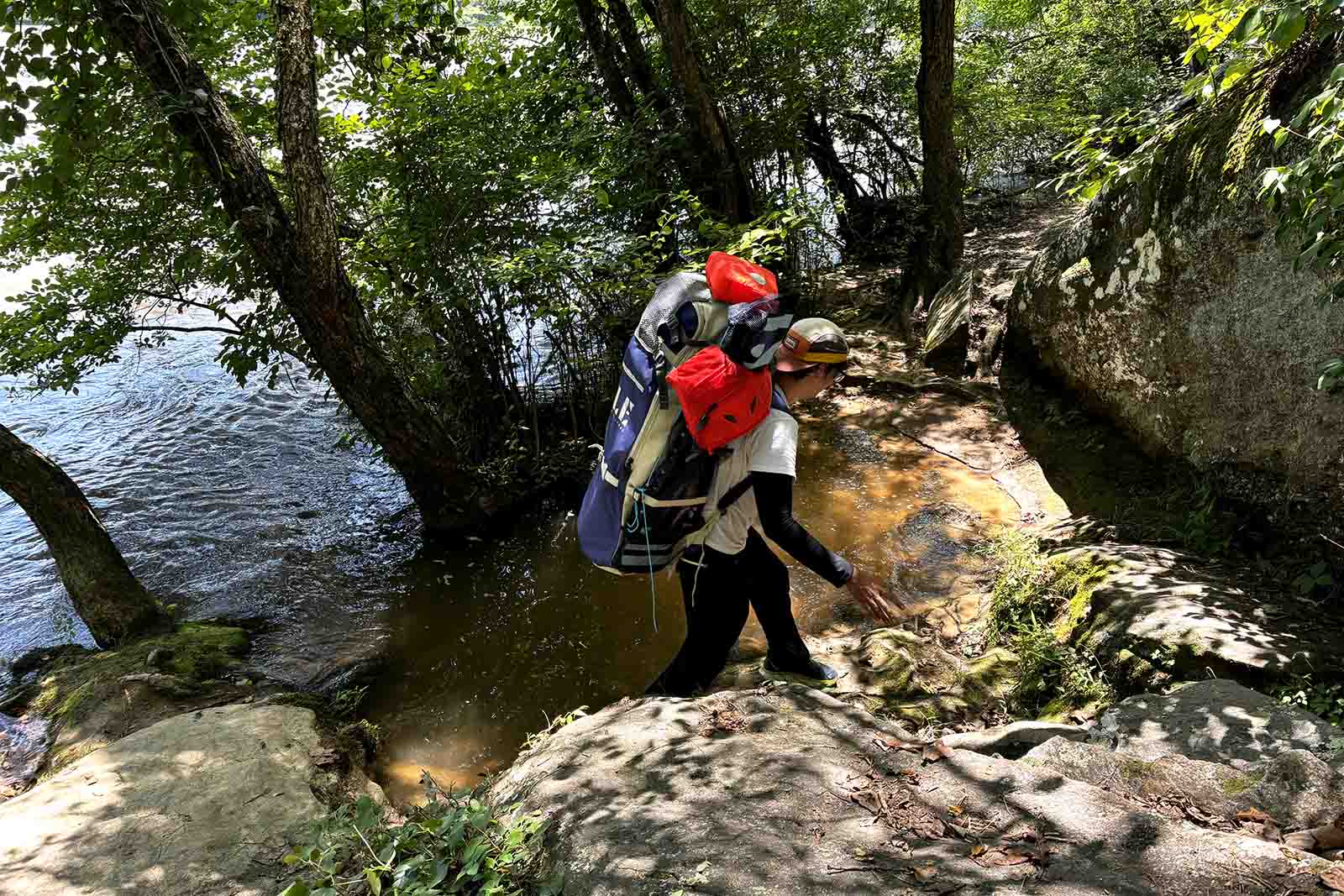
The Switch Pro costs $1,100, which is enough to get you two solid-body kayaks or one nice canoe. But given that this board feels like the Swiss Army Knife of paddle sports, I’d say it’s more than worth the money. (And I may not be the only one. As of July 2, it’s sold out on the ISLE website.)
The logistics of packing a paddle board aren’t always easy, either. Inflating this beast with the hand pump is the most exhausting part of the day. (ISLE does offer a $145 Custom Electric Pump.) And rolling it back up can sometimes get a little frustrating.
The kayak seat also moves out of position a little too easily, so I’ve begun troubleshooting ways to attach it more securely. But those are quibbles when weighed against the ability to carry this backpackable boat to wherever you’d like to enter the water.
That being said, there is one item from the ISLE Explorer 2 kit I prefer over the upgraded Switch Pro accessories. For starters, I like the backpack for the Explorer 2.
Though slightly smaller, it’s also easier to carry and, therefore, better for adventures requiring a bit of portaging. The Switch Pro backpack is larger and fits more gear, with a more rigid design and wheels on the bottom (not the lightest or best for portages).
That’s perfect if you’re trying to avoid carrying the board at any point. But it’s also quite uncomfortable as a backpack. As a result, I now use the Explorer pack with my Switch Pro.
ISLE Switch Pro: Final Verdict
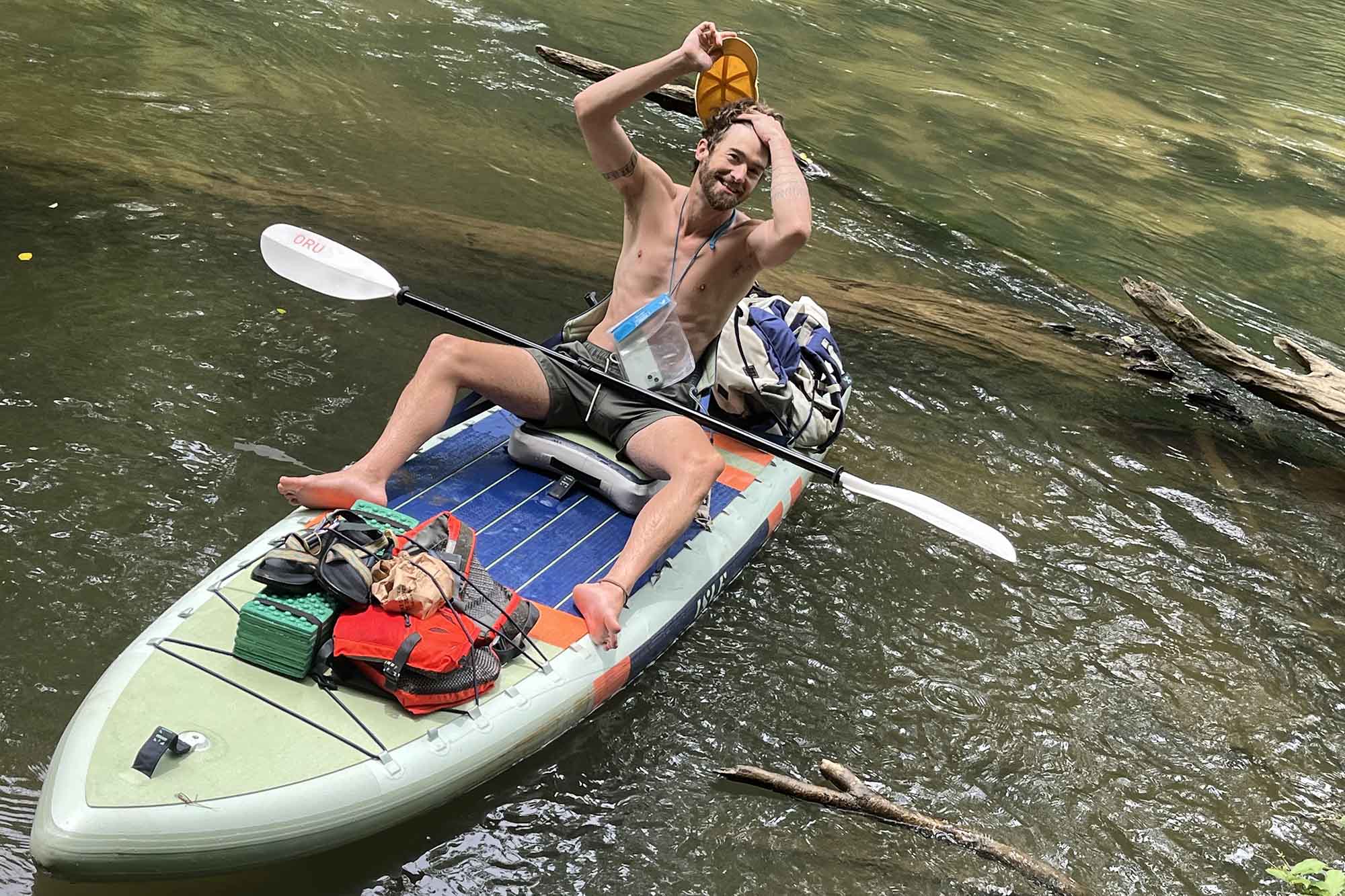
If you’re still on the fence, just imagine this 3-day weekend: You attach the kayak chair and spend Saturday barreling through Class II and Class III whitewater. On Sunday, you take the chair off for a lazy SUP paddle around a calm lake. Then, you wrap things up on Monday by simply floating down a river, dining on delicious food from this floating picnic table.
That’s exactly what I did over my Memorial Day weekend, finding immense enjoyment from the Switch Pro’s flexibility as I explored dozens of miles of the Chattahoochee. It allowed me to discover the natural beauty that defines so much of Georgia. And everyone I’ve put on this board — friend, brother, and even octogenarian father — immediately fell in love with it.
